The Blue Cabin Remediation
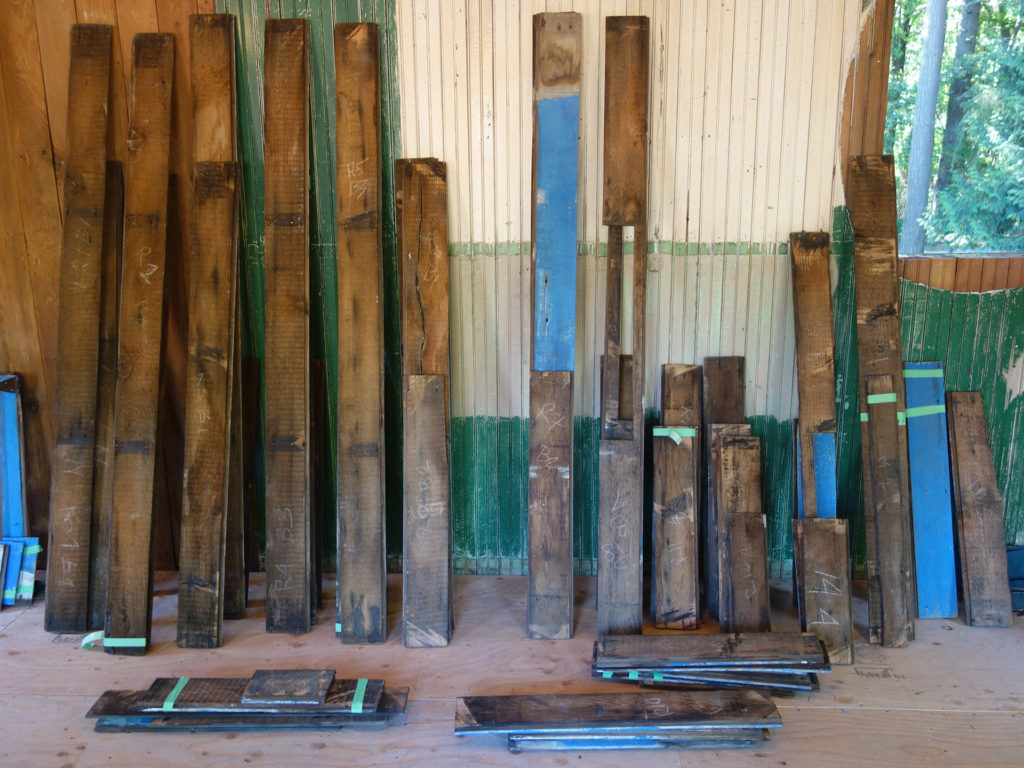
In June 2017, the cabin was moved from the lot at Canexus Corporation (now Chemtrade Electrochem Inc.) to the middle of a sheep pasture across the highway at Maplewood Farm. There, it underwent a complete remediation by Mayne Island artists and builders Jeremy and Sus Borsos. The Borsos’ took the cabin apart, piece by piece, reinforced its structure, cleaned up the wood, reinsulated the walls and flooring, gave it a new roof, and repainted it, paying careful attention to materials, technique, and its provenance, all the while preserving its heritage. They were on site from dawn until dusk, seven days a week, for about seven months. The remediation was completed in February 2018.
grunt gallery archivist and Blue Cabin committee member Dan Pon talks about the Borsos’ restoration as, “… at once a process of (re)construction, heritage preservation, and cultural archaeology, all undertaken with a profound regard for materials, technique, and provenance.”
Jeremy Borsos writes, “Every day for five months, we woke up at four-thirty in the morning. By five-thirty, we had eaten breakfast and driven to North Vancouver, where we would wait for the workers at Maplewood Farm to arrive, allowing us back inside the gates to resume work on the Blue Cabin.
We couldn’t get enough of it as if, having consumed some elixir, we were besotted with the place. We knew every day would bring another surprise. By dint of dismantling and reconstruction, we were connected to everyone who had ever lived inside its walls. Knowing Carole and having met Al compounded the feeling of sensitivity we developed as the project unfolded. It was not just preservation of the material, but also of the intangible history.
Sus and I have always been interested in the qualities of the past, how they are represented and the anonymity that is given identity through an artifact. The Blue Cabin is all of this and more. We know, for instance, that on forty-one different occasions, a colour was chosen and brushed on somewhere inside the cabin. Each of those colours is based on a personal choice, the era, and circumstances. All of the accumulated creativity that the Blue Cabin represents is a kind of portal that will now keep on giving, and all who enter will become part of its past.”
The Blue Cabin received a Change Maker Award from BC Museums Association’s Roundup Magazine in 2018, and won a Heritage B.C., Heritage Conservation Honour Award in 2019.
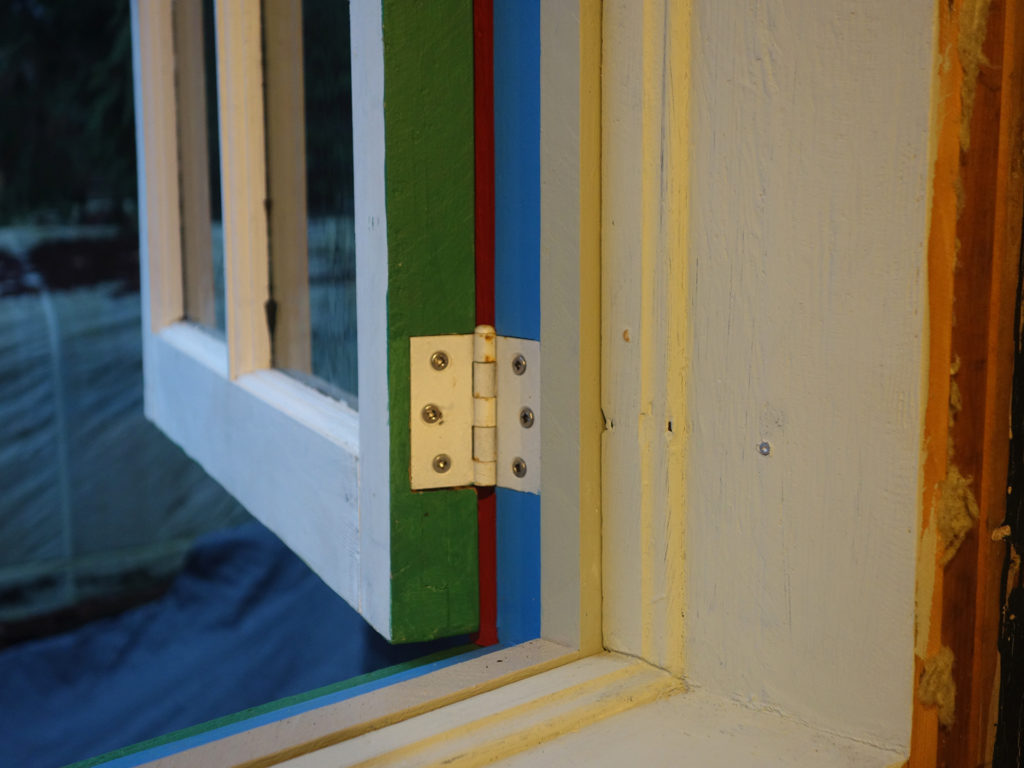
The effect of pure primary and secondary colour invigorates any encounter with the cabin—even opening a window.
The hidden labour of fitting compound curves together in the ceiling mouldings is typical of its builder: “The Norwegian”.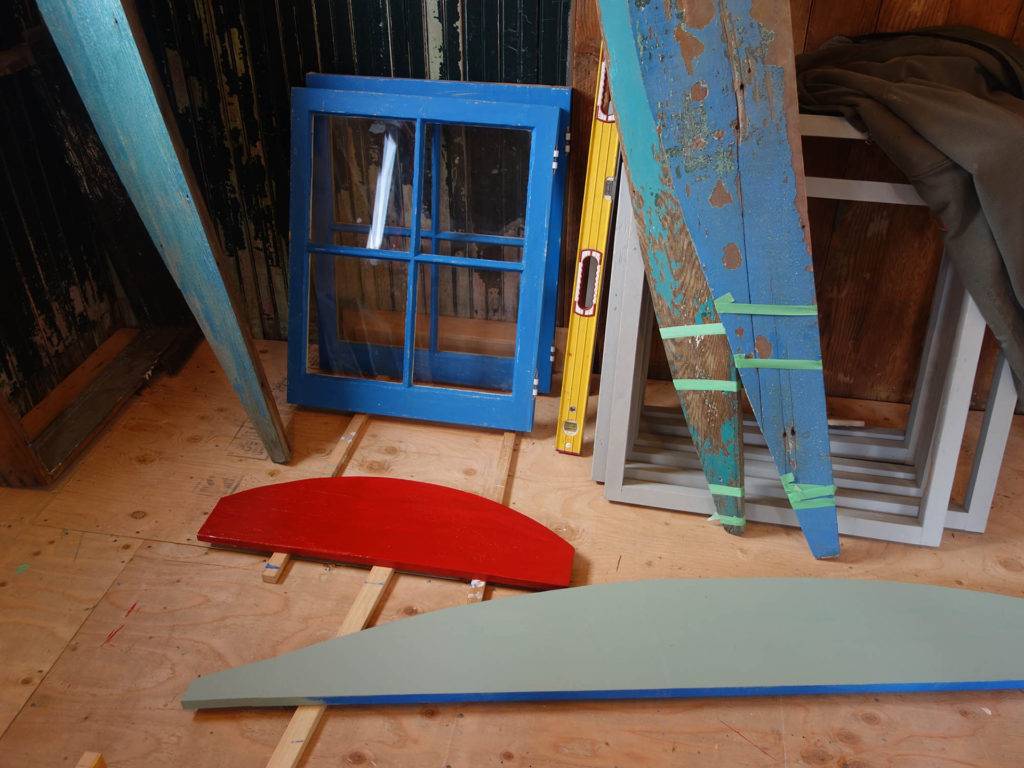
By restoring, repainting and replacing, we realized we were following a kind of choreography of decorative enthusiasm that the original builder expressed in 1927.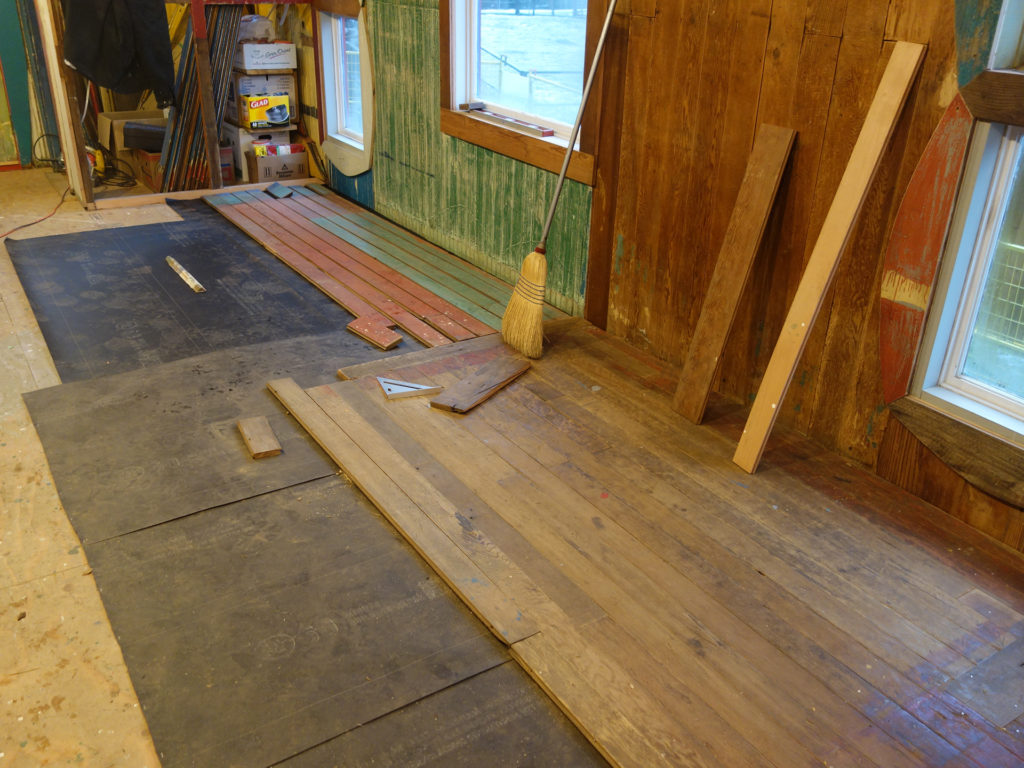
All the floorboards were positioned in their original location by numbering them. Wherever there was irreparable damage we trimmed it off, but essentially every board (and subsequent painting) remain the same.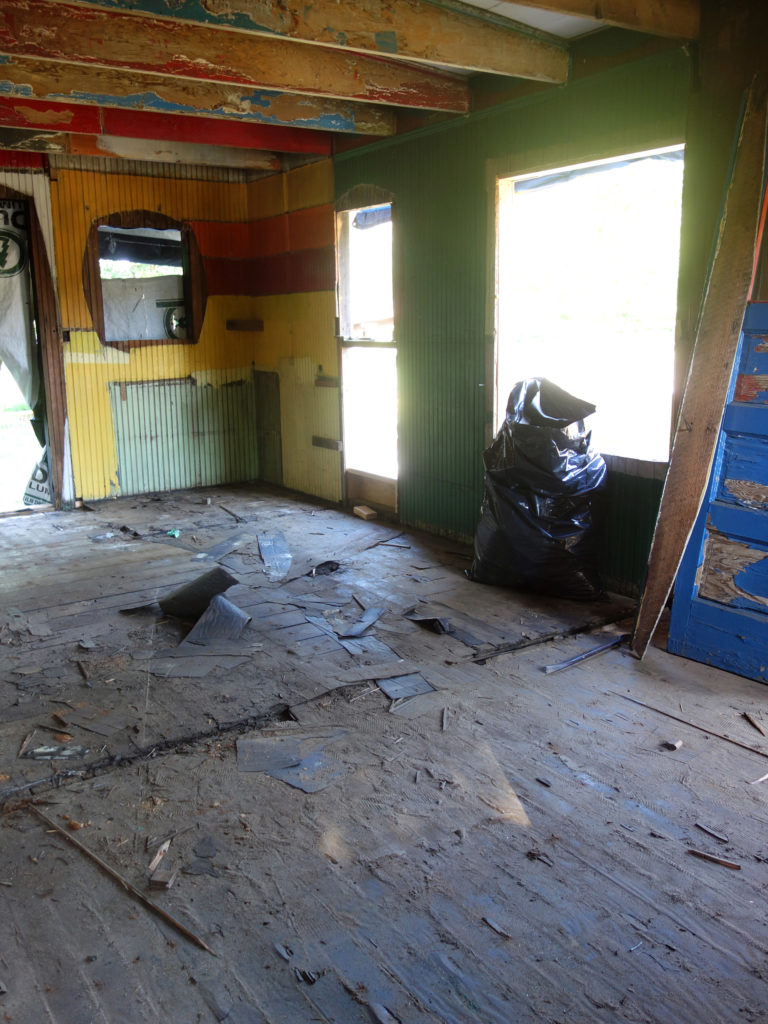
The floors were multi-layered. Two subfloors trapped a treasure of paper ephemera between them.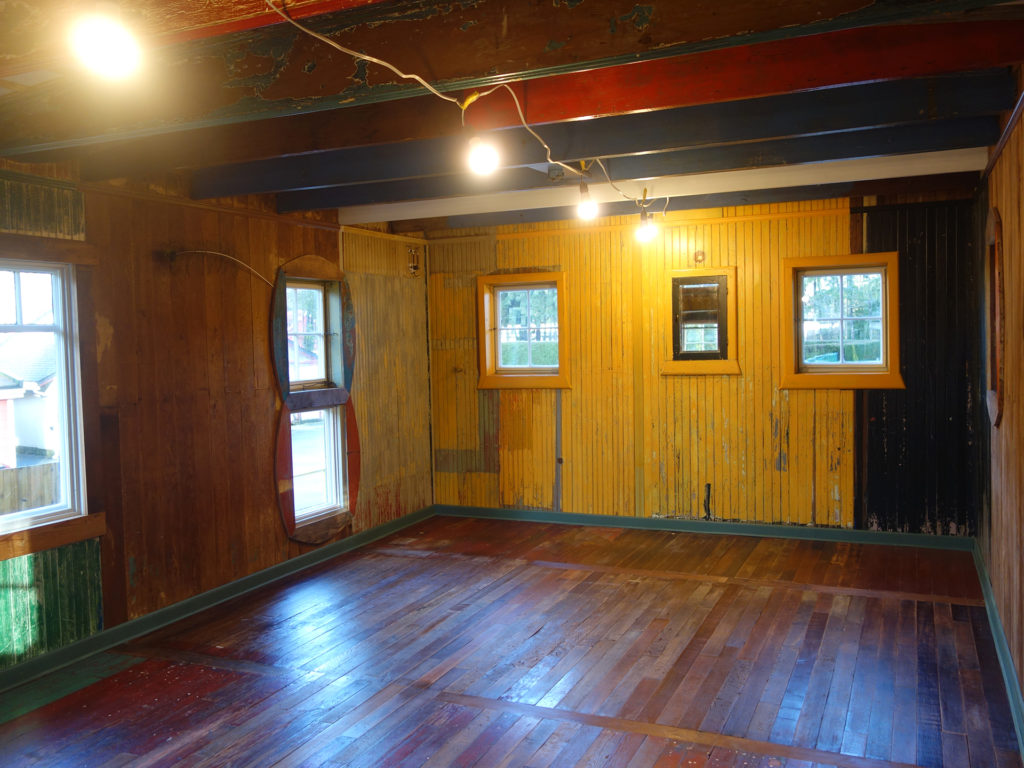
The temporary work lamps shining brightly still do not convey the riot of colour inside—it’s all there and all its past, together again.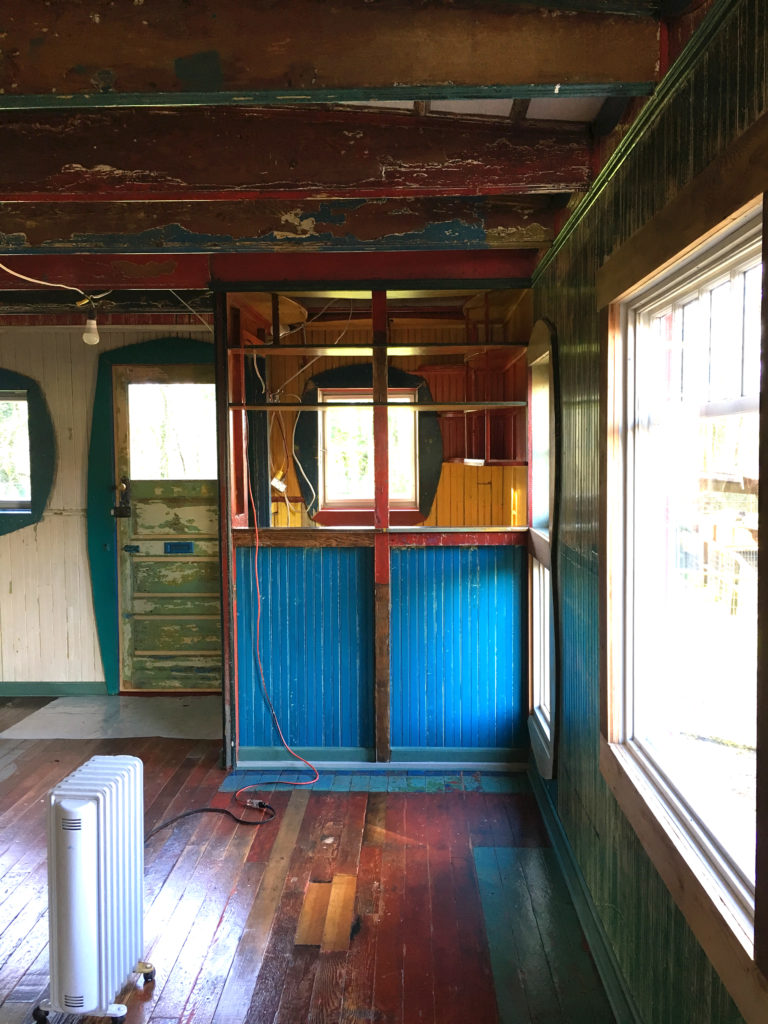
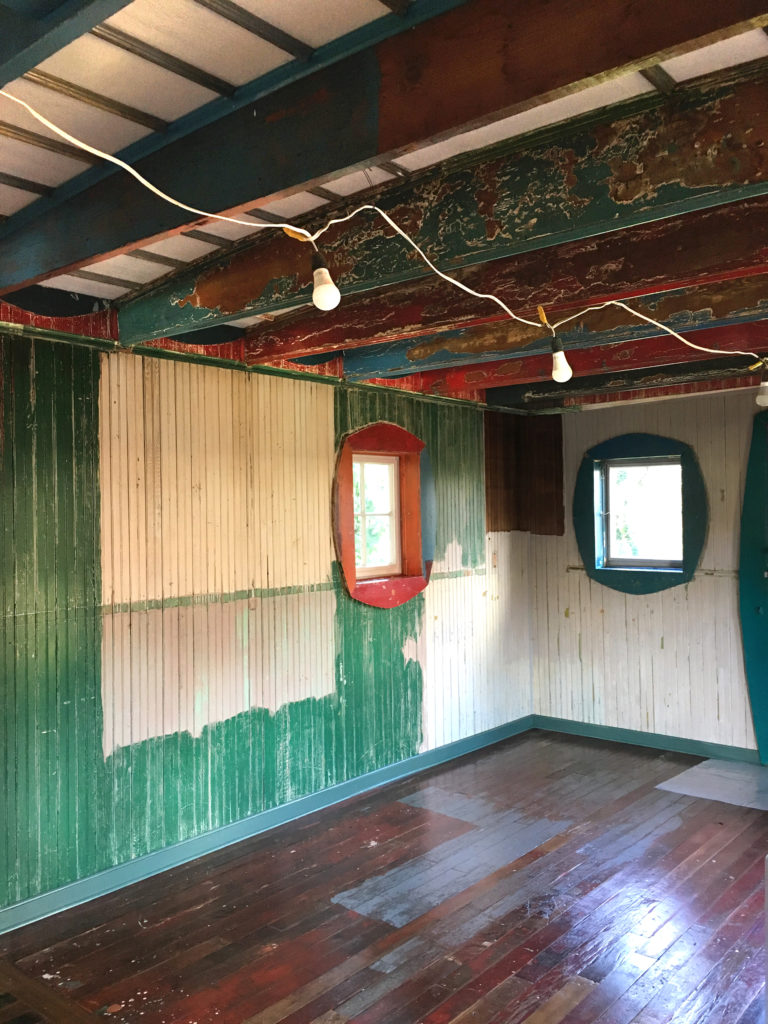

This image shows the 1983 colour version on the entry end. We later painted over the orange window trim and conformed to the final colour scheme that Carole had painted on in more recent years.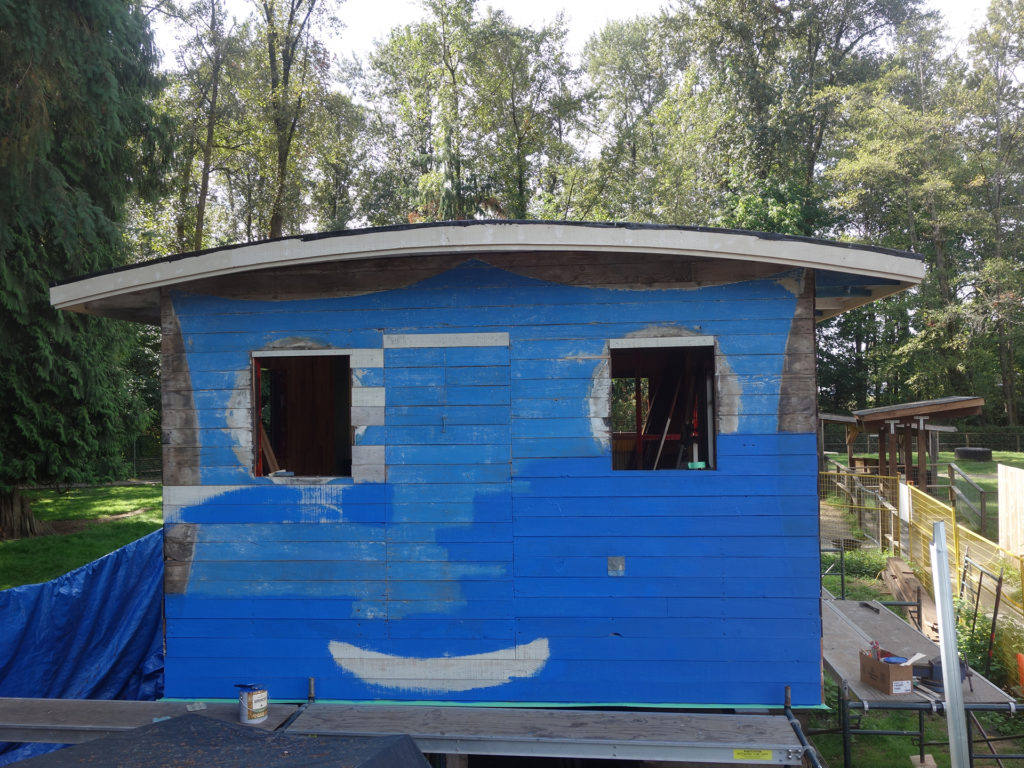
With a primed white surface and a bucket of Blue paint, how could we resist?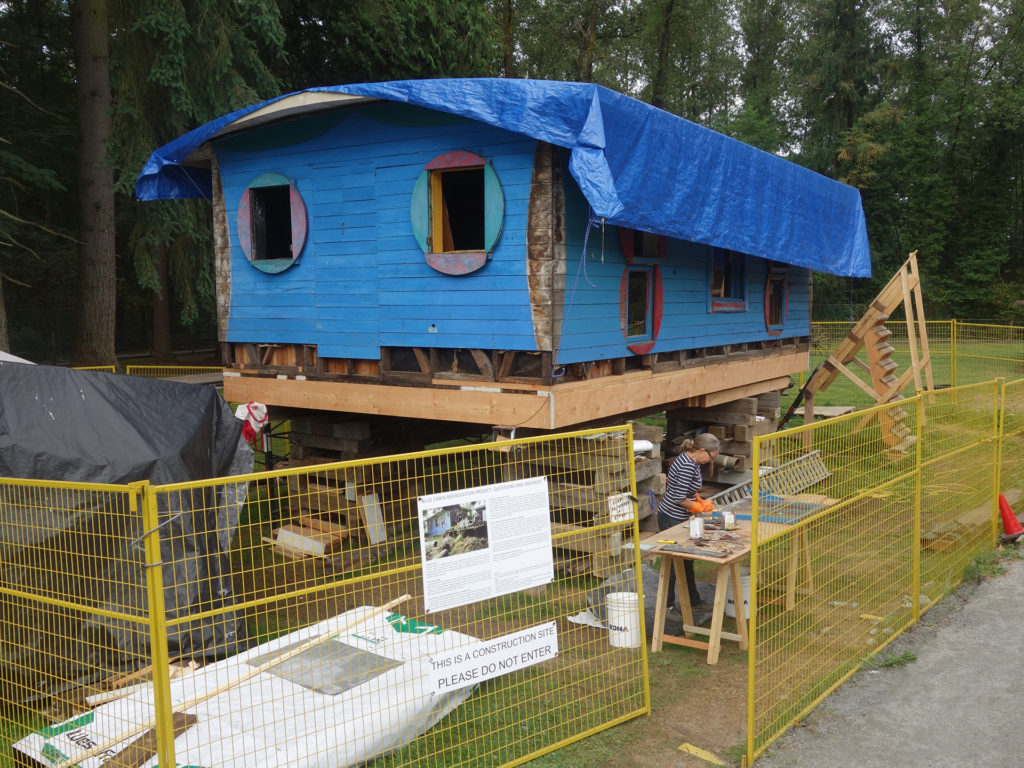
We thought there would be many rain days in North Vancouver. Not an unreasonable assumption—but we were proved wrong and the weather smiled on us.
All remediation photos: Jeremy Borsos